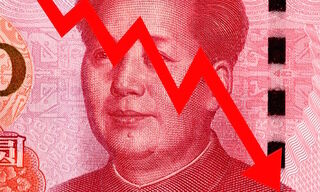Entrepreneurs don’t want to give up equity in their business, but the challenge remains, how do they raise the necessary capital early on in order to scale up operations? NK Naginlal Modi at ACP sees a solution.
It is often very difficult for young companies to secure a loan from a commercial bank. As a result, many entrepreneurs have little choice but to go for venture capital, in the process «giving up» some equity to the new investors.
This is where venture debt can play a crucial role in the financing ecosystem for early stage companies, providing transition capital to businesses.
Venture debt has been a common financing vehicle for tech startups in the U.S. for a number of years but for a variety of reasons it has been less prevalent in Asia – however this trend is changing.
Intellectual Property Risk
Venture debt is a form of senior debt financing that can be used for anything from working capital and equipment financing through to project financing and M&As.
The most common structure used for venture debt is a loan with warrants attached as it gives the venture debt provider the right, but not the obligation, to buy shares in the company at a certain price before its expiration. The venture debt provider can thus benefit from any potential future equity upside, enhancing its overall return.
Venture debt seeks to fill in a gap which has not been fulfilled by the traditional commercial bank loan market.
In terms of funding requirements, it is not easy for startups to tap into loans provided by the traditional banks. They do not have enough fixed assets to pledge as collateral for a bank loan. Sometime the only major asset available to pledge is the company’s intellectual property.
Furthermore, they often lack a track record in terms of cash flow generation and in many instances, they are not profitable yet. Finally, the commercial banks may not have the expertise to evaluate the creditworthiness of early stage, tech companies.
Why Choose Venture Debt?
Venture debt is significantly less dilutive for the existing shareholders than venture capital. The dilution coming from venture debt happens only when the attached warrants are exercised. The proceeds from venture debt can be used to grow the company and achieve a higher valuation in subsequent rounds of equity raising.
There is less interference from venture debt providers. Generally no board seat is required in return for venture debt.
It provides an extension of the company’s cash runway. The startup can delay its next equity raising, especially if its valuation has fallen, and the management has more time to focus on tackling problems and growing the business.
It’s ideal for special situation. By this I mean, when short-term funding, factoring or working capital needs to be arranged urgently so the company can capitalise on new opportunities. Often the funding requirements just aren’t big enough to justify the time and costs associated with raising another equity round.
But There Are Some Disadvantages
While on first glance venture debt financing seems like an obvious choice for early-stage companies, some considerations must be made.
Venture debt still has to be fully repaid at maturity. The company risks default and liquidation in the event they fail to repay the venture debt and accrued interests.
There is additional pressure on cash flow, Interest will have to be paid out of the company’s cash flow each month and this may lead to a liquidity issue if sales targets are not met.
Venture debt may have covenants depending on whether the provider is a bank or fund. Failure to meet the financial covenants will cause the company to be in default.
There will always be a risk of losing all the assets that have been pledged as security if the company defaults and the lender enforces security.
The Lion City Roars With Venture Lending Initiatives
In Singapore, the funding landscape for startups has been largely dominated by venture capital. Venture debt is still nascent, and at the moment it is dominated by the three local banks, DBS, OCBC and UOB.
In April 2016, SPRING Singapore launched the Venture Debt Program (VDP) with the three local banks to support the growth of small and medium enterprises (SMEs) and startups in Singapore.
The program aims to deploy 500 million Singapore dollars venture debt loans over the next two years, with SPRING providing 50 percent risk sharing on the loans under the VDP.
Under the VDP, SMEs and startups can apply for venture debt loans of up to 5 million Singapore dollars, which can be used to finance working capital, equipment purchase, projects and M&As. Each of the three institutions have the flexibility to fix their own financing terms.
In Conclusion
The VDP is a major boost to the funding ecosystem for tech startups in Singapore and addresses a very real gap in the market, especially for companies which have already raised Series A equity round. Venture debt offers an alternative source of funding, without causing immediate dilution for the existing shareholders. It offers the founders and other shareholders more time to raise the next equity round.
However, it should be considered as a complement rather than a substitute to venture capital. Too much venture debt could put pressure on the company’s cash flow and make the company insolvent.
Venture debt providers should remain vigilant and evaluate the business plan and creditworthiness of the borrower, rather than banking on the existing shareholders (i.e. venture capital firms) to lead subsequent equity fundraising to repay outstanding venture debts. There is no guarantee that this will happen.
While it is still early to pronounce on the success of venture debt in Singapore, we strongly believe that venture debt has the potential to become a strong and reliable source of funding for tech startups.
NK Naginlal Modi is Director of Corporate Development at ACP.
NK has over ten years of diverse experience in finance across venture capital, credit investments, debt raising and corporate finance in Asia working at companies including Rothschild and Platinum Partners. He holds an MBA from INSEAD and a Bachelor of Business from Nanyang Technological University.


























